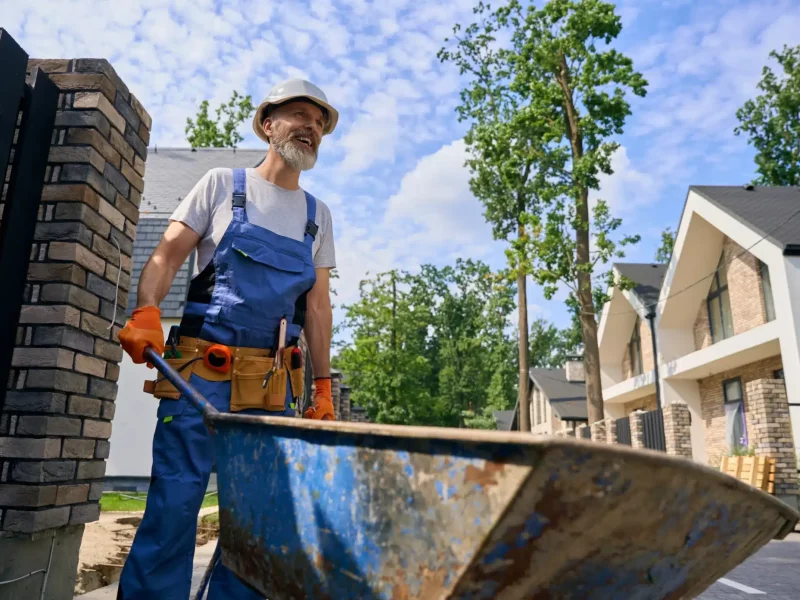Questions about scaffolding safety: Safety should always come first in the worlds of construction and maintenance. A lot of construction projects use scaffolding, but if it’s not used correctly, it can be very dangerous. This article will provide you with a comprehensive guide to scaffolding safety interview questions and sample answers. This article will help you understand the important parts of scaffolding safety, whether you’re a job candidate getting ready for an interview or a boss wanting to hire someone with the right safety skills.
A scaffolding is a temporary structure that is used to give workers a safe place to work during building, maintenance, and repair projects. However, working on scaffolds can be hazardous if proper safety measures are not followed. Employers are increasingly looking for candidates who understand scaffolding safety to ensure a secure work environment. This article will talk about how important it is to be safe on a scaffold and give you a list of interview questions and sample answers to help you get ready for your next job interview.
Landing a job as a Scaffold Helper requires more than just physical strength and a head for heights You need to be able to demonstrate your knowledge of safety protocols, your ability to work effectively in a team, and your commitment to quality workmanship To help you prepare for your upcoming interview, we’ve compiled a comprehensive guide to the most frequently asked Scaffold Helper interview questions, along with expert tips on how to answer them effectively.
Frequently Asked Scaffold Helper Interview Questions:
1. Why do you enjoy working in a physically demanding role?
This question aims to assess your physical capabilities and your willingness to perform physically demanding tasks. Highlight your physical strength stamina, and your ability to work in challenging environments.
Example Answer:
“I thrive in physically demanding roles. I enjoy the challenge of working with my hands and using my physical strength to contribute to the construction process. I’m comfortable working in all weather conditions and I’m not afraid of heights. In fact I find the views from scaffolding to be quite rewarding.”
2. What characteristics are vital for a scaffold builder?
This question tests how well you understand the most important skills needed to do well in this job. Emphasize the importance of safety, attention to detail, teamwork, and communication skills.
Example Answer:
“I think a good scaffold builder should care about safety, pay attention to details, and work well with others.” Safety is very important to me in this job, and I’m going to follow all safety rules and instructions to the letter. I’m also very careful with my work; I make sure that every part of the scaffolding is put together correctly and securely. Also, I’m a good team player who can communicate clearly and concisely and work well with others. “.
3, What motivates you in the workplace?
This question digs into your inner drive and what makes you want to do your best at work. Bring out your love of construction, your desire to work on important projects, and your dedication to doing a great job.
Example Answer:
“I’m motivated by the opportunity to contribute to the construction of buildings and infrastructure that will have a lasting impact on our communities. I find it incredibly rewarding to see a project come to life from the ground up, knowing that I played a role in its creation. I’m also driven by a desire to constantly learn and improve my skills. I’m always eager to take on new challenges and expand my knowledge base.”
4. Do you enjoy working on-site with other trades professionals?
The purpose of this question is to test your ability to work well with others and with professionals. Show how well you can work with others, talk to them, and be willing to learn from them.
Example Answer:
“I absolutely enjoy working on-site with other trades professionals. I find it stimulating to collaborate with people from different backgrounds and disciplines. I’m a strong communicator and I’m always open to learning new things from others. I believe that teamwork is essential for success in any construction project, and I’m committed to working effectively with my colleagues to achieve our common goals.”
Additional Tips for Acing Your Scaffold Helper Interview:
- Research the company and the specific role you’re applying for. This will help you tailor your responses to demonstrate how your skills and experience align with their needs.
- Prepare examples from your previous experiences that showcase your skills and abilities. This will make your answers more credible and memorable.
- Practice your answers to common interview questions. This will help you feel more confident and articulate during the interview.
- Dress professionally and arrive on time. First impressions matter, so make sure you present yourself in a positive light.
- Be enthusiastic and show your passion for the field. Your enthusiasm will be contagious and make you a more appealing candidate.
By following these tips and using the provided examples as a guide, you’ll be well-equipped to ace your Scaffold Helper interview and land your dream job.
4. Safety Regulations and Compliance
A3: OSHA (Occupational Safety and Health Administration) sets and enforces safety regulations in the workplace, including scaffolding. They establish standards to ensure the safe construction, use, and maintenance of scaffolds.
A4: Common OSHA violations include inadequate fall protection, lack of guardrails, scaffold overloading, and insufficient employee training.
5. Safety Regulations and Compliance
A3: OSHA (Occupational Safety and Health Administration) sets and enforces safety regulations in the workplace, including scaffolding. They establish standards to ensure the safe construction, use, and maintenance of scaffolds.
